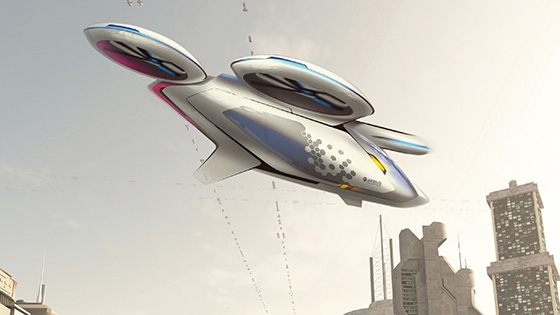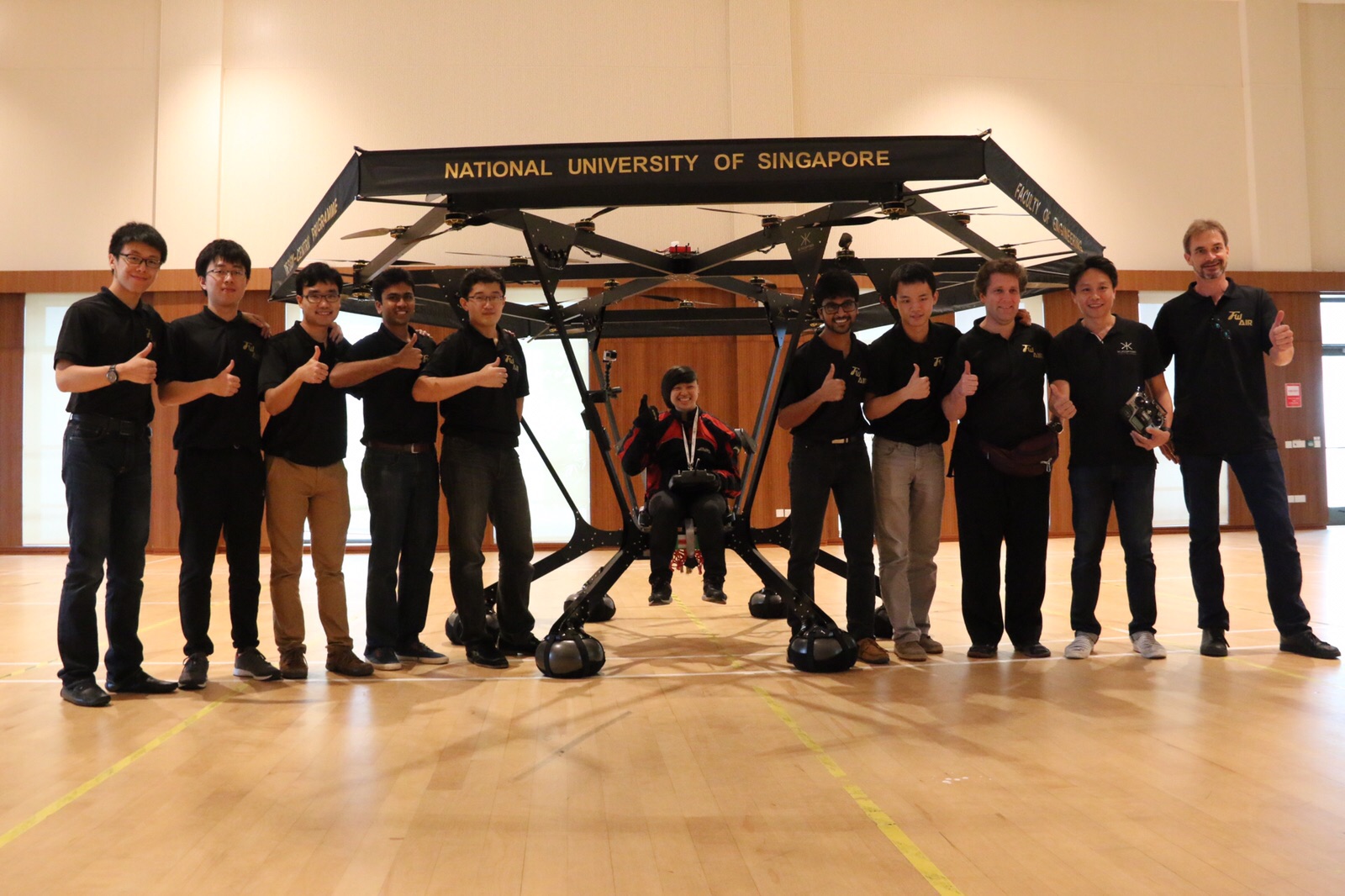Airbus and its partner Local Motors have just finished a successful design challenge for delivery drones that can carry things like emergency medical supplies to selected destinations. Recent announcements and the release of a patent drawing show Airbus is doing serious work toward delivering humans to their selected destinations in a scaled-up version of such drones. Many brilliant people have tried to combine the benefits of ground and air transport over the years, including Molt Taylor, designer of the rightly famous Aerocars. The example at Seattle’s Museum of Flight causes docents to lower their voices out of respect for the accomplishment. That’s certainly a concept promoted for last decade by Dr. Brien Seeley, head of the Sustainable Aviation Foundation and sponsor for this blog. His AIAA paper on Regional Sky Taxis spells out his hopes for alleviating ground-bound gridlock with aerial alternatives. Recently, Airbus formed a group in California’s Silicon Valley called A3, or A Cubed. The group earned a …
A Snowstorm in Singapore
Having worked on a three-week project in Singapore 10 years ago, your editor became accustomed to the daily temperatures approaching 100 degrees Fahrenheit, and evenings at a temperate 80 degrees (which some locals described as a “cold snap”). It makes one wonder where the name “Snowstorm” came from when students at the National University of Singapore worked two semesters to bring their mult-rotor recreational flying vehicle to fruition. An eight-person student team working as “FrogWorks” started with a 1/6th-scale model, then scaled that up to something that could carry and be controlled by a single pilot. FrogWorks is a collaborative effort between NUS Faculty of Engineering’s Design-Centric Program (DCP) and the University Scholars Program (USP). According to NUS, “FrogWorks engages students in the study, design and construction of clean leisure craft, a rapidly growing segment of green technology. Previous FrogWorks projects include the conversion of a sport motorcycle and a yacht from petrol to electric propulsion.” 24 (six more than …
No Pain in This Membrane
On September 30, the National University of Singapore announced the world’s first energy-storage membrane, with the claim that it “outstrips existing rechargeable batteries and supercapacitors,” and according to Science Daily, “Surpasses existing rechargeable batteries and supercapacitors.” The cheese-cloth appearance looks a bit like a gauze bandage, but when sandwiched between what are alternatively described as two thin metal plates or two graphite plates can hold a significant charge much greater than that of conventional batteries or supercapacitors. The material, developed by a team from the National University of Singapore’s Nanoscience and Nanotechnology Initiative (NUSNNI), and led by principle investigator Dr Xie Xian Ning, is capable of holding a “charge at 0.2 farads per square centimeter. This is well above the typical upper limit of 1 microfarad per square centimeter for a standard capacitor,” according to the University. Because energy storage in capacitors is usually measured in farads, How Stuff Works calculates the following to help us understand what that means …


